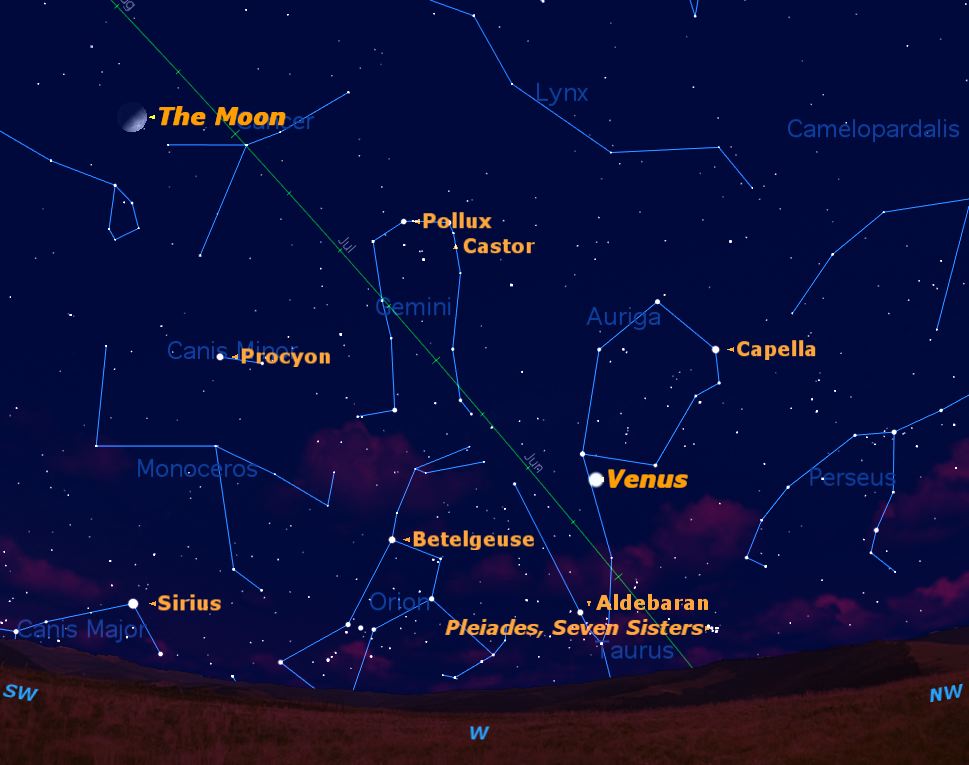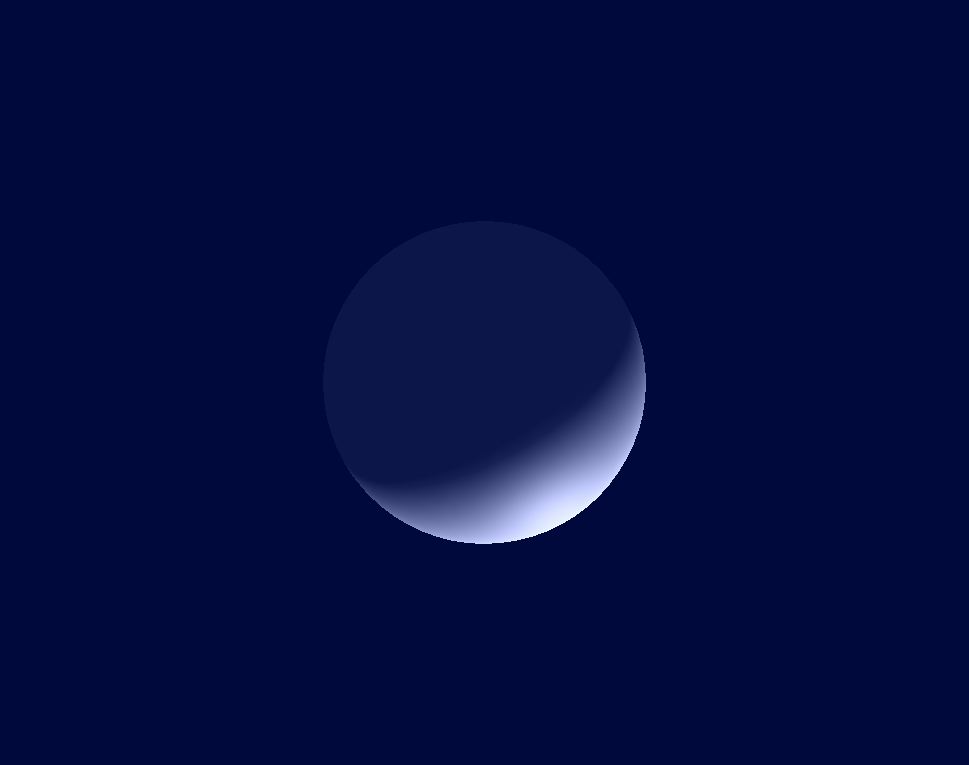See Dazzling Venus at Its Brightest This Week

Step outside any night this week about an hour after sunset and have a look at the western sky. The first thing that will catch your eye is the brilliant planet Venus.
Look a little more closely and you'll see that Venus is surrounded by bright stars. The sky map accompanying this story will help you identify them.
Although Venus is always one of the brightest objects in the sky, this week it is at its very brightest. That's because of a combination of circumstances.
The solar system's two innermost planets, Mercury and Venus, go through a series of phases similar to the moon, as they are lit from the side at different angles by the sun. Their apparent size also changes as they move from the far side of the sun to the near side.

Currently Venus is moving toward the Earth, so it is getting larger and brighter. Its phase is also narrowing as it moves in front of the sun, which makes it decrease in brightness. So we've got two opposing forces in action: Getting closer means getting brighter, and a narrowing crescent means getting fainter. This week the two balance out to make Venus as bright as it can possibly be. [Photos: Venus and Crescent Moon in April 2012]
Through a telescope this week, Venus will look like a miniature version of a five-day-old moon, except without any mountains, lava seas or craters. The view of Venus through a telescope is often disappointing and surprising; it doesn't seem like something so beautiful to the naked eye should be so bland when magnified.
Despite Venus' somewhat boring appearance, there is a lot going on beneath the planet's clouds. Its dense atmosphere and proximity to the sun make for an exaggerated greenhouse effect. The surface temperature on Venus is a hellish 860 degrees Fahrenheit (460 degrees Celsius). By way of comparison, the melting point of lead is 621 F (327 C).
Get the Space.com Newsletter
Breaking space news, the latest updates on rocket launches, skywatching events and more!
Over the next few weeks, Venus will continue to approach the Earth, getting larger in size as its crescent continues to narrow. Even if you don't have a telescope, take a look at Venus with binoculars. Soon you will see it as a tiny crescent.
On June 5 (June 6 in Australia and Asia), something very special will happen: Venus will pass between the Earth and the sun, appearing as a black dot silhouetted against the sun. This event — known as a transit of Venus — happens on average only twice a century, and this will be the last chance to see such an event for the rest of your life. It won’t happen again until the year 2117.
This article was provided to SPACE.com by Starry Night Education, the leader in space science curriculum solutions. Follow Starry Night on Twitter @StarryNightEdu.
Join our Space Forums to keep talking space on the latest missions, night sky and more! And if you have a news tip, correction or comment, let us know at: community@space.com.

Geoff Gaherty was Space.com's Night Sky columnist and in partnership with Starry Night software and a dedicated amateur astronomer who sought to share the wonders of the night sky with the world. Based in Canada, Geoff studied mathematics and physics at McGill University and earned a Ph.D. in anthropology from the University of Toronto, all while pursuing a passion for the night sky and serving as an astronomy communicator. He credited a partial solar eclipse observed in 1946 (at age 5) and his 1957 sighting of the Comet Arend-Roland as a teenager for sparking his interest in amateur astronomy. In 2008, Geoff won the Chant Medal from the Royal Astronomical Society of Canada, an award given to a Canadian amateur astronomer in recognition of their lifetime achievements. Sadly, Geoff passed away July 7, 2016 due to complications from a kidney transplant, but his legacy continues at Starry Night.










